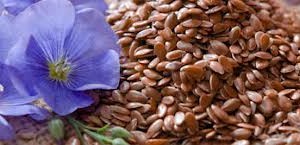on Jun 27, 2016 in Cancer prevention, General Wellness, Nutrition
So plentiful was gold in the Inca Empire, that they traded it to the Spanish Conquistadors for glass beads. They did not understand the value of what they had because it was something they had in abundance. In this country, particularly in Southern California, we are fortunate to have an abundance of fresh produce. We are so used to seeing large supermarket displays of fresh fruits and vegetables, that we often fail to understand the value of this treasure. No supplement, no vitamin, no herb or oil, no matter how well made, will ever have the potent value of nature’s collection of healing properties found in abundance in our everyday fruits and vegetables. Fruits and vegetables are treasure chests full of vitamins, minerals and hundreds of thousands of tiny pigmented nutrients called phyto-nutrients. All these nutrients travel through your blood stream, repairing, renewing, and detoxing you on a cellular level. There is simply no more potent healing agents than these and they heal without negative side effects! So instead of spending your money on glass beads in the search for feeling better, start every day with fresh produce. Continue to eat it throughout the day. Strive to eat 2 to 3 cups of dark leafy greens and sprouts a day. Get creative with adding in vegetables to all your meals. Snack on fruit every few hours. Vary your choices as the seasons dictate. It is the best medicine money can...
Read More
on May 23, 2016 in Cancer prevention, General Wellness, Nutrition
Whether you have or haven’t heard of Ghee, it’s worth your health to Ghee friends. Ghee is concentrated, or clarified butter and is prepared by taking organic butter churned from cream (produced by pasture-fed cows), and simmered to remove liquid residue. Spices can be added for flavor. The texture, color, and taste of ghee depend on the quality of the butter, source of the milk used in the process, and the duration of the boiling. It is considered a super-food in Ayurveda Medicine. Ghee is a saturated fat and not recommended to consume in large quantities, however for those times when you want that lovely buttery flavor, you can increase your health benefits by choosing organic Ghee over traditional butter. HEALTHY GUT Ghee is very concentrated in a fatty-acid called butyric acid. Butyric acid is the primary fuel source for the good microbes living in our guts. In fact the healthy bacteria in our GI tracks like it so much they produce their own form of butyric acid. A significant source of butyric acid in the gut helps promote the growth of healthy gut bacteria which has been linked to protection from various diseases, and it is also a favorite fuel for the cells that line our intestinal tract which helps us maintain a healthy lining in our colons. NUTRIENT DENSE Ghee is an excellent source of omega-3 fatty acids, Vitamins A, D, E and K, numerous minerals, and nine phenolic antioxidants (powerful anti-inflammatory and immune bolstering nutrients). WEIGHT LOSS Ghee is one of the highest natural sources of CLA (Conjugated Linoleic Acid). CLA increases how well and how much we burn energy from the food we eat. When combined with exercise, a regular intake of CLA has been shown to reduce body fat and (perhaps) increase metabolism. IMMUNE SUPPORT AND DISEASE PREVENTION Butyric acid has been shown to boost killer T cell activity (our immune system’s major fighting cells). Animal studies show that as little as 0.5 percent CLA in your diet can reduce cancerous tumors by over 50 percent, in breast, colorectal, lung, skin, and stomach cancers. CLA has also been documented to aid in the reduction of asthma, cardiovascular disease, high blood pressure, elevated cholesterol and triglycerides, osteoporosis, diabetes/pre-diabetes, and allergies.Ghee is concentrated,...
Read More
on Jan 25, 2016 in Fitness, General Wellness, Nutrition, Weight Loss
Winning Strategies for Long-term Weight Loss Maintenance Weight loss is hard , but the true challenge is maintaining a weight loss. Some studies estimate that as many as two-thirds of people who lose weight gain a majority of it back within three years. If you have ever struggled with your weight you may have already experienced this. As depressing as these statistics are, remember that there are people out there who are defying the odds, long-term weight maintenance is achievable. In the Positive Choice Integrative Weight Management Programs we have been able to better the odds for most people. Three years after losing weight, 50% of our participants are maintaining all or most of their weight loss, another 25% are maintaining two-thirds or more of their weight loss. We work to improve our programs every year, employing the strategies that have been proven successful. Our goal is to provide the support and tools to help people lose weight and help them build a lifestyle that will give them every chance for long-term success. Although more research needs to be done to fully understand the challenges to weight maintenance there are a few things that have been clearly documented. The health of your intestinal tract is important. Certain bacteria in our intestinal tract produce hormones that can effect appetite and metabolism. Up to two years post-weight loss, fluctuating levels of grehlin/leptin hormone levels can create increased feelings of hunger. People who have lost weight are hungrier for at least two years. Most people spend money on losing the weight, but direct very little resources towards to their maintenance efforts. When seeking to lose weight, it is extremely important that you participate in support that can help you for at least two years of your post-weight loss. One of the biggest mistakes people make in our Weight Management Programs is not taking advantage of our long-term weight maintenance programs. During a weight loss phase and also following in the maintenance phase your routine should include foods that help promote healthy gut bacteria and perhaps probiotics to help adjust your intestinal tract bacteria. Maintaining a weight loss eating a diet high in fruits, vegetables, and legumes should help promote the growth of...
Read More
on Jan 20, 2016 in General Wellness, Nutrition
Herbal Remedies for the Common Cold Echinacea: Echinacea may help some people reduce their risk of getting a cold as well as reduce the duration of their colds significantly. Eucalyptus: Steam inhalations using a few drops of eucalyptus oil in hot water can help loosen phlegm and reduce a sore throat and congestion. If you suffer with asthma or allergies check with your physician before trying this remedy. Peppermint: Peppermint contains menthol, which works as a decongestant, expectorant and helps thin mucus and cures a cough. Peppermint oil should be used with another neutral oil, and should never be used directly on the skin or ingested. Other popular home remedies: Gargle with hot water and salt to relieve a sore or hoarse throat. Drink ginger tea with a squeeze of lemon throughout the day. Ginger acts as a natural decongestant and also helps with pain relief. Lemon provides vitamin C and helps kill bacteria in the throat. Sip on a cup of warm milk mixed with a pinch of turmeric and honey to soothe a bad throat and other cold symptoms. Feed a Cold Include foods that are high in antioxidants and vitamin C such as fresh fruit and vegetables to boost your immunity. This will not only help fight a cold but may also prevent it from recurring. Foods high in vitamin B complex can also help relieve symptoms of a cold. Avoid heavy foods that are high in starch, and foods that are spicy, oily, deep-fried and processed. Food rich in zinc such as oysters, pork, crab, nuts, yogurt and milk also help reduce the intensity of cold symptoms. Drink plenty of fluids to keep your body hydrated and help flush out the toxins. In addition to at least eight to ten glasses of water daily, you should have fresh fruit and vegetable juices and clear soups or broths. Stay away from alcohol and caffeine as they work as diuretics and dehydrate the body further. Lemons should be consumed in the form of lemon juice mixed with hot water and honey to soothe a sore throat and boost your vitamin C intake. Peppers, mustard, onions, and horseradish that make your nose run and your eyes water are good...
Read More
on Jan 5, 2016 in Cancer prevention, Nutrition
Flax seed may be one of the most powerful plant foods on the planet. Flax seeds help reduce your risk of heart disease, cancer, stroke and diabetes. Although flax seed contains all sorts of healthy components, it owes its primary healthy reputation to omega-3 essential fatty acids. Each tablespoon of ground flax seed contains about 1.8 grams of plant omega-3’s. The lignins in flax seeds are a powerful antioxidant. One tablespoon of flax seeds a day has been shown to protect against estrogen/progesterone driven breast cancers and work as well as Tamoxifin and other estrogen blockers....
Read More






